Panasonic Lumix GH6
Last year’s Panasonic GH5 II was merely an appetizer: for would-be filmmakers who need a small camera with huge creative potential, the Panasonic GH6 is shaping up to be the main course.
The new flagship in Panasonic’s Lumix G range of mirrorless cameras based on the Micro Four Thirds mount, the 25.2MP GH6 packs a dizzying array of movie skills into its compact body: 5.7K video at 60fps; Apple ProRes 422 HQ recording; 7.5 stops of image stabilization; 4-channel XLR audio recording; and a monitor that can be tilted in almost any direction.
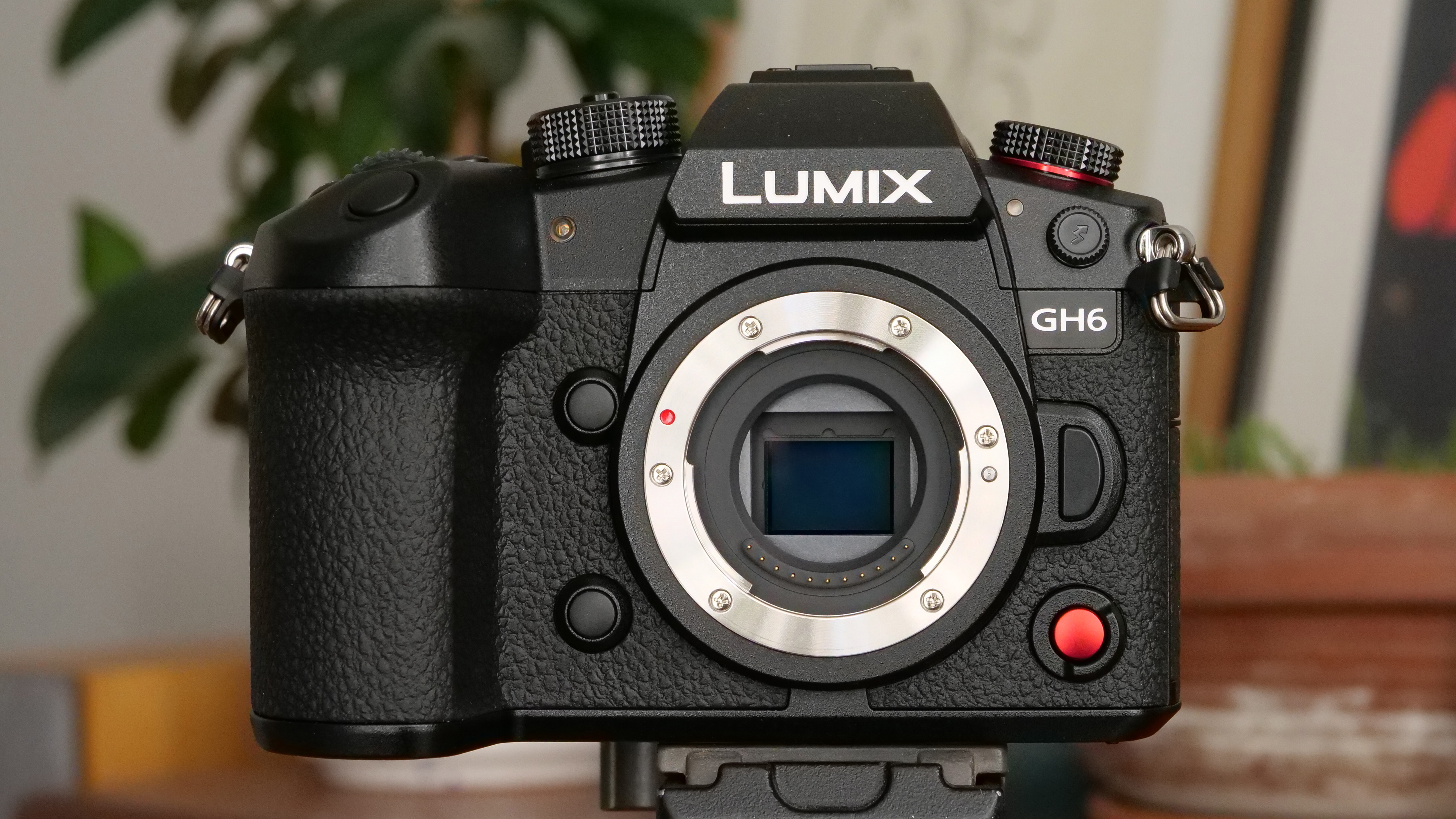
There’s a lot more besides that here – including a cooling fan that ensures long recordings aren’t curtailed by overheating issues – and the overall impression from our hands-on time is that Panasonic has delivered another excellent hybrid camera with professional aspirations. A movable feast for filmmakers with limited space and a relatively limited budget, perhaps?
Price and release date
The Panasonic GH6 will be available from March 2022 priced at US$2,199/£1,999/AU$3,229 body only or $2,799 / £2,199 in a kit including a 12-60mm zoom lens.
That makes it slightly more expensive than the Panasonic Lumix GH5 II, another video-focussed hybrid mirrorless Micro Four Thirds model (which costs £1,499 body only or £1,699 with the same 12-60mm lens). The GH6 is also pricier than the Panasonic Lumix S5, an L-mount mirrorless model (which costs $1,999 / £1,799 / AU$3,199). It isn't Panasonic’s most expensive video-centric mirrorless camera, though: the Netflix-approved Panasonic Lumix S1H L-mount camera launched for $3,999 / £3,599 / AU$5,999 (body only).
In terms of rivals, it’s in a similar bracket to the Sony A7 IV ($2,499 / £2,400 / AU$$4,299), Canon EOS R6 ($2,499 / £2,499 / AU$4,499) and Nikon Z6 II ($2,600 / £2,549 / AU$4,399), but slightly cheaper than all three. The Blackmagic Pocket Cinema Camera 6K Pro ($2,495 / £2,254 / AU$3,935) should make for an interesting alternative given that it can also record Apple ProRes – but it does lack many of the creature comforts (like continuous tracking autofocus and a functional stills shooting mode) the GH6 provides.
Design and handling
The GH6’s body shape is immediately familiar: it’s that well-worn, DSLR-inspired design used by most of Panasonic’s Lumix G series. It might not be particularly original, but it works: there’s a big textured grip to wrap your right hand around while your left supports the lens, and a nice clear OLED electronic viewfinder for composing, previewing and reviewing your shots no matter how bright the weather conditions.
Speaking of weather conditions, the body is sealed against dust and water ingress, and is built on a rugged magnesium alloy frame for toughness. It’ll also work to temperatures as low as -10C/14F.

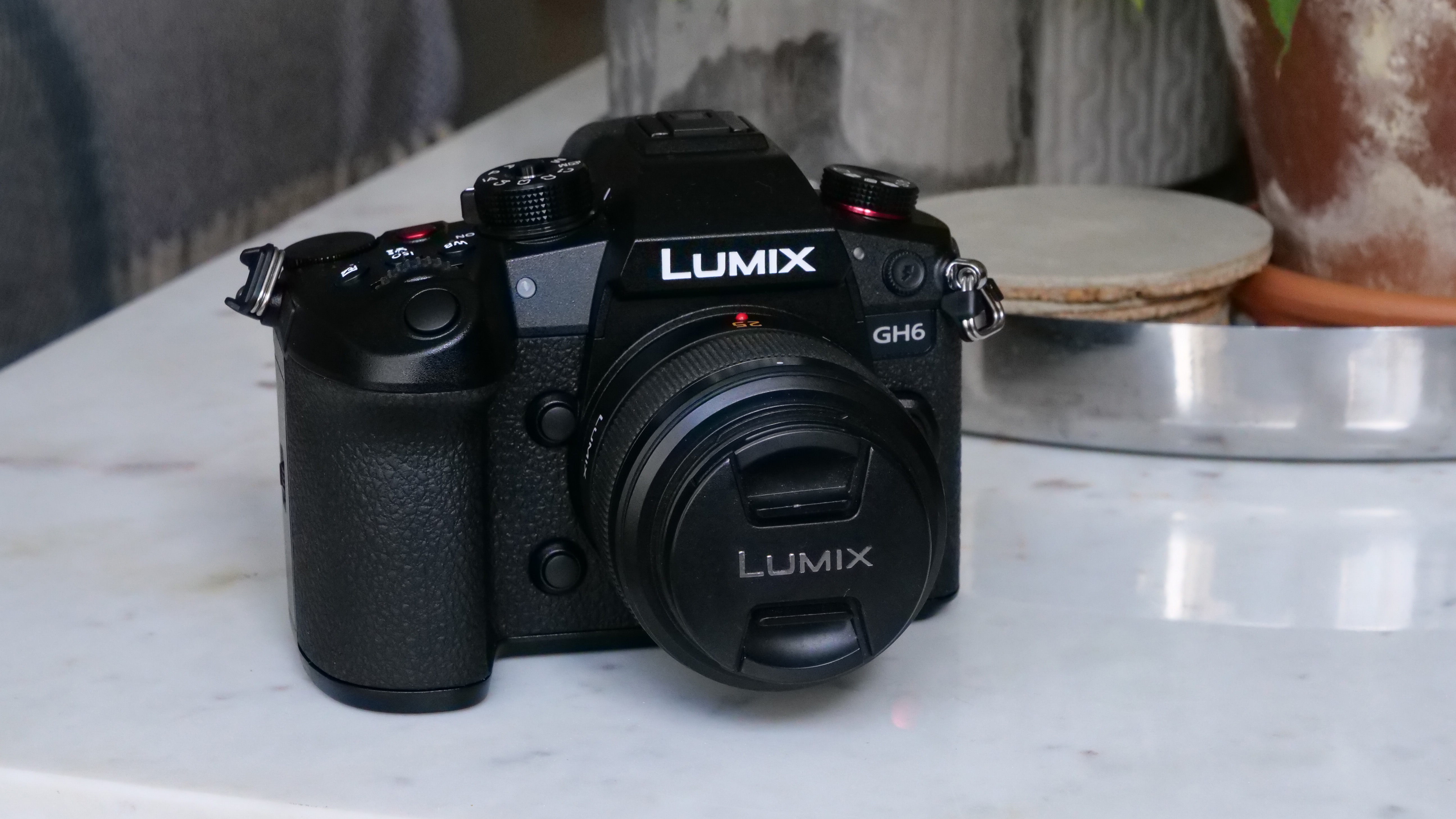
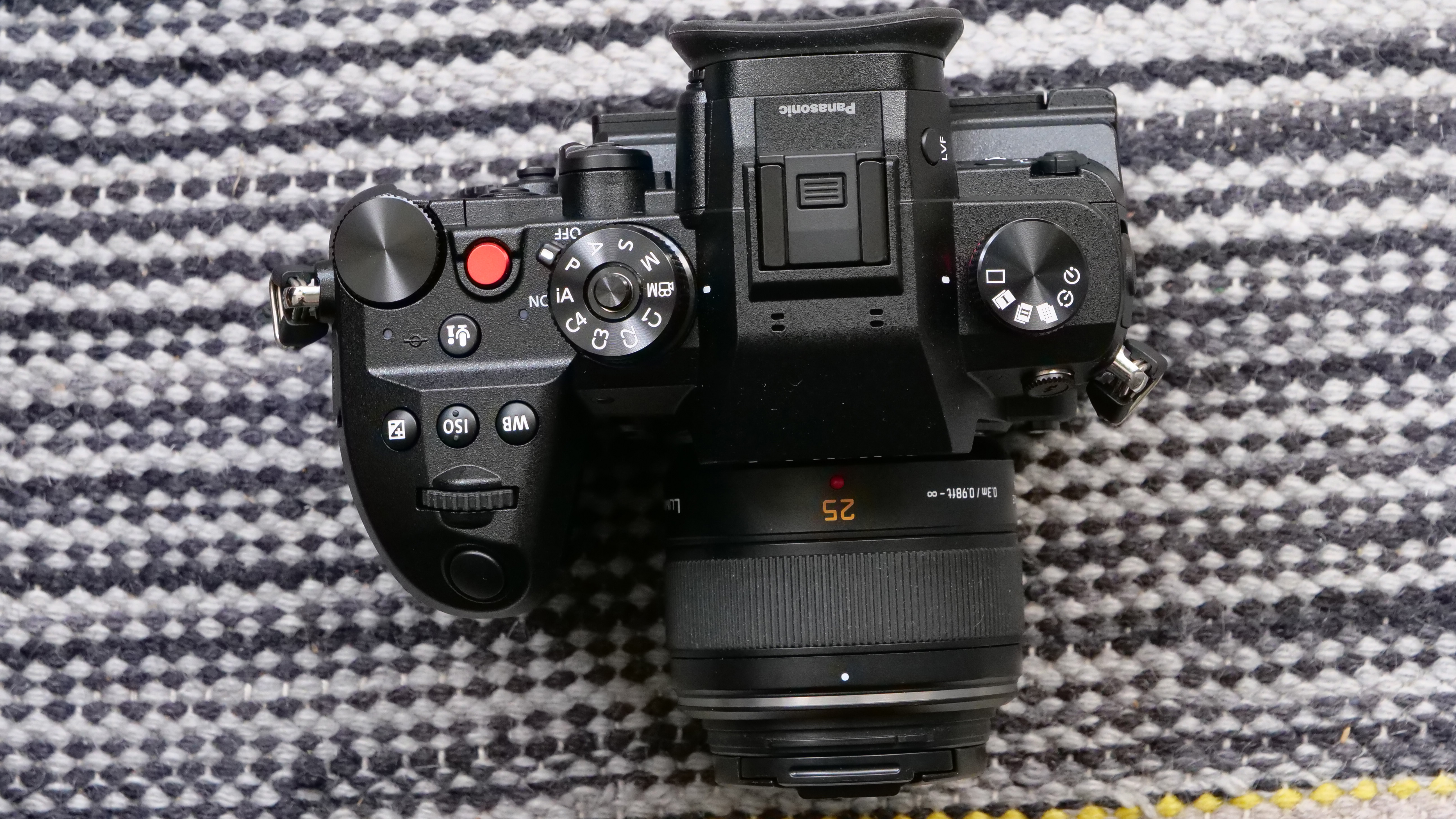
The physical buttons, wheels and dials are thoughtfully positioned, and as frequent users of the GH5 II we found the GH6 to be pleasingly familiar to control and use. Panasonic has considerately placed a second video record button on the front of the camera (the first is up on the top plate), which is really helpful for vlogging and other self-shooting work.
The 3-inch touchscreen is the best we’ve seen on a recent Panasonic model, with a super-flexible design: not only does it flip and twist, it also tilts. This gives you greater scope for shooting at unusual angles, and also means you can attach both a USB and a full-size HDMI cable to the GH6 without blocking your view of the screen.
The body itself is lightweight and compact considering its impressive array of specs – a key benefit of the small physical size of its Four Thirds image sensor. Without a lens attached, but with an SD card and battery inserted, the GH6 weighs just 823g, and measures 138.4 x 100.3 x 99.6mm, which makes it only slightly bigger than the GH5 II.
The added bulk here seems to come as a consequence of the cooling system, which causes the screen to bulge out from the back slightly, but it’s still a fairly trim package overall.
Features and autofocus
Being a video-first hybrid, the connectivity of the GH6 appears to have been given lots of thought.
There’s a full-size HDMI Type A that can output video up to C4K 4:2:2 10-bit at 60fps, headphone and microphone ports, XLR microphone compatibility (via the optional DMW-XLR1 accessory), plus a USB-C port with 10Gbps transfer speeds that can also be used as a constant power supply and battery charger.
There are two card slots, one for standard SD and the other for CFexpress Type B cards (a first on a Lumix G camera, and vital for recording video in some of the more demanding formats like ProRes).
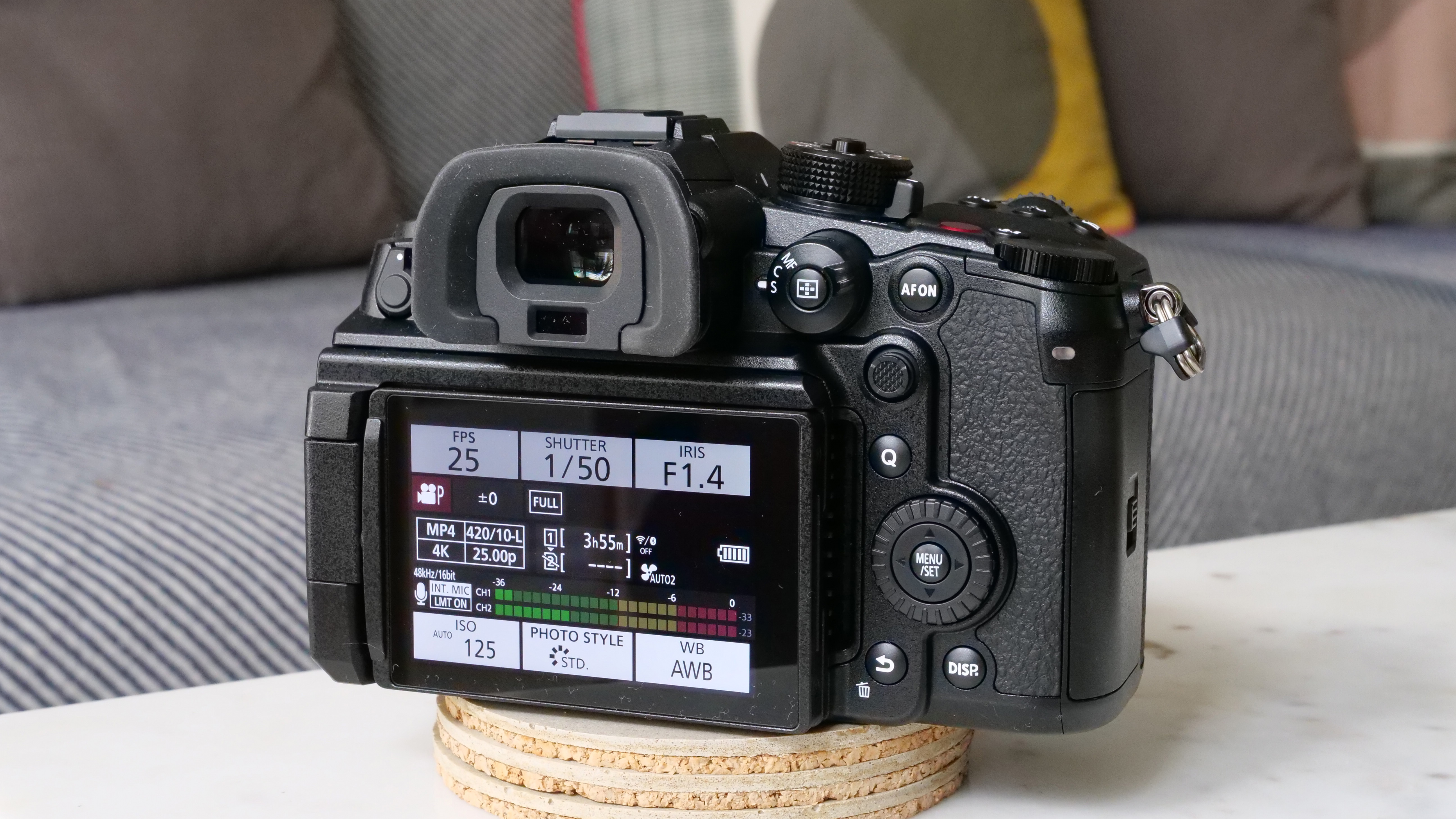
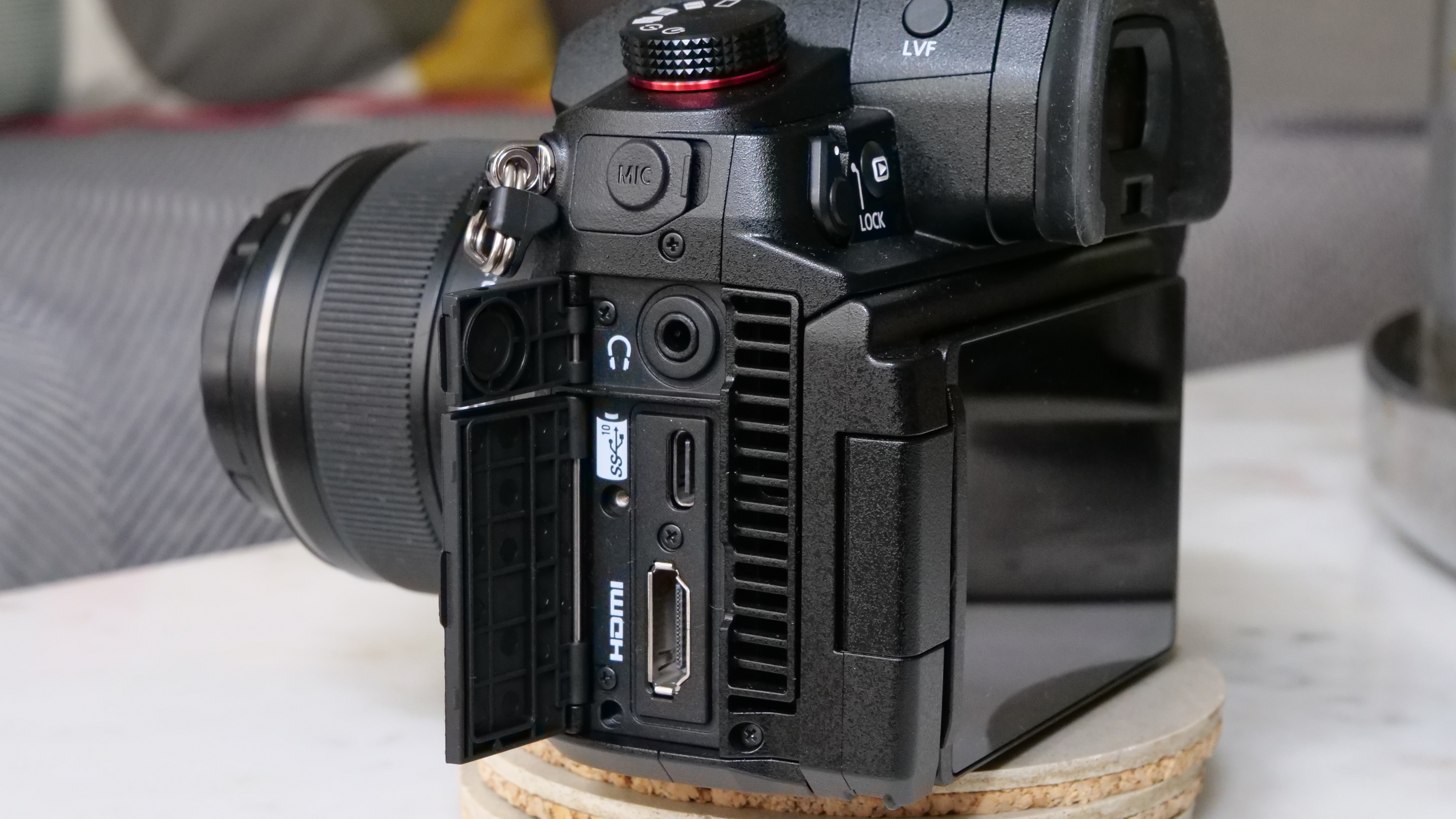

The contrast-based DFD autofocus setup seems broadly similar to that of the GH5 II, with a wide range of options available, including automatic tracking of moving objects and detection settings that will recognize and track human, animal and eye/face subjects. Our brief testing of these found them all to be fairly effective, even if the sheer speed of acquiring a lock might not match some rival manufacturer’s hybrid AF setups.
The 5-axis image stabilization system has been given an algorithmic upgrade over the GH5 II’s, and Panasonic claims it now offers up to 7.5 stops of correction – to the point where the user can shoot a 100MP photograph in the image-stacking High Resolution mode handheld (previously, a tripod was required). We tried that and it actually worked really well, while for video it seemed very effective with some standard walk-and-talk vlogging, but we’ll have to put it through more rigorous testing before we can call it truly outstanding.
Video and image quality
There’s a truly mind-boggling level of customizability to the video here. We thought the GH5 II offered a wealth of formats, resolutions and frame rates, but the GH6 takes things to new heights.
The list of video options (which is far too long to list here – it takes up almost half of the space on the camera’s official spec sheet) might seem like overkill to the casual user, but filmmakers will likely be rubbing their hands together at the creative possibilities offered by the likes of ProRes, 5.8K and 5.7K resolutions and variable frame rate recording, not to mention the fact that overheating will never abruptly cut off their recordings. Panasonic says that, when shooting using an external power source rather than the battery, the new cooling system means the only thing restricting recording time is your supply of storage space.
For the sake of this hands-on review we recorded some short clips in an extremely high-quality mode (4K 10-bit 4:2:2 MOV at 50fps). The windy, overcast weather conditions were far from ideal, but even reviewed on the camera’s own screen the detail, dynamic range and image stabilization looked impressive. At home, when transferred to the PC and examined properly, the clips were truly excellent: clean, natural and gloriously rich in detail – and that’s straight from the camera, before any grading or post-production tricks are applied.
The only imaging issue we suspect the GH6 might face is its low light performance. The small physical size of the sensor on Micro Four Thirds cameras often means their light-gathering abilities seem limited in comparison to the larger APS-C and full-frame sensors employed by other mirrorless cameras. But if you're aware of that and willing to work around it, we can’t see it being a huge barrier to achieving good results.
Early verdict
Our first impressions of the Panasonic GH6 are almost entirely positive. The company has taken the strong foundation laid down by the GH5 and GH5 II and built capably upon it.
It's added the likes of Apple ProRes to the camera’s array of video formats, while improving image stabilization, connectivity and handling and incorporating a cooling system that ensures video clips won’t be curtailed by overheating.

The multi-angle screen is also a welcome touch, and the fact that the camera is only slightly bigger than the GH5 II while doing all this is an impressive feat in itself. The only slight downer is some features, like USB-to-SSD recording, will have to wait for a firmware update that currently has no release date.
But otherwise, the Panasonic GH6 is a powerful, and more affordable, alternative to the Sony A7S III. We're looking forward to testing it some more to see if if really can take the top spot in our guide to the best video cameras.
- Check out our guide to the world's best YouTube cameras
0 comments:
Post a Comment